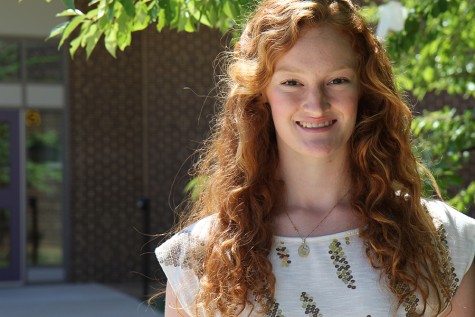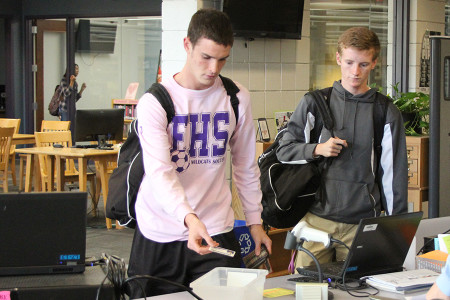IDs put to further use
Students are now required to have their IDs with them if they plan on staying after school beginning, Nov. 4.
“I think the new policy is a hassle because I don’t always have my ID with me,” Ramya Chengalvala (10) said. “I think it’s a good way to keep track of the kids who come in and go out [though].”
Another reason behind the ID usage, in the library specifically, is that student resources require money, like the after-school hours in the library, according to Mrs. Deborah Asher, head principal. The ID system is a way to see if student are utilizing those resources, Mrs. Asher said.
An additional benefit is increased security.
“I think the administrators issued the new ID policy to makes sure only students are walking in and not just random people,” Jarod Jackson (11) said.
While this is the first year that student IDs are being put to use beyond the activities pass, this new practice marks the beginning of much more extensive use of the IDs across campus. The administration hopes the ID will move beyond the library.
IDs help the librarians know who is in the library more quickly than looking at the sign-up log because the log is a list of student numbers. Mrs. Asher pointed out that if the librarians wanted to see the students’ names they would have to look up the numbers.
“I like the new policy because as a relative newcomer to EHS, I don’t know a lot of kids. I’m still learning names,” Mrs. Janie Pickett, head librarian, said. “IDs have been a huge help to be able to see their pictures and know who the student is and then later when the student comes and asks a question I can call them by name.”
Matresa Landers (10) did not realize how the sign-up log worked.
“I think having to drop our ID’s off is just too much,” Landers said. “I don’t see why they don’t just let us sign in.”
The new practice has taken students who did not see the posters or read the daily announcements by surprise.
“I walked into the library one day without my ID and they let me type in my number that first week,” Jackson said.
The library staff has seen the benefits of the ID practice and acknowledge that it is a work in progress.
“The other librarians and I like the new policy,” Pickett said. “We hate the friction it causes the kids if they don’t have it with them that day [though].”
Students who have misplaced their IDs or never got their picture taken at any of the three free picture sessions offered August-October need a temporary paper ID printed from their grade level principal.
The administration is figuring out what to do with the approximately 10% of students who did not get their pictures taken in the first place.
The students who have lost their IDs have to pay $2 to get a new one, and if they misplace it again, $5 for the second replacement, according to Mrs. Asher.
The ID policy will help staff members, not just the librarians, identify students and be able to more easily see why they’re on campus.
“I really hope people see this as a way to make things run more smoothly while we offer more resources to students,” Mrs. Asher said. “I hope they don’t see it as some sort of ‘got you’ or ‘keeping up with you’ because that’s not the goal of the program.”
The ultimate goal is to eliminate the paperwork and fast track students to freedom and mobility.
“Using the IDs to come in and out of the library requires students to have more independence similar to what students on a college campus go through,” Mrs. Asher said. “So in a lot of ways its preparation for that. I hope that this new policy will make things more productive and more efficient. I also hope that it will be a gateway into the long-term vision of providing students with more freedom and flexibility based on their past behavior and responsibility.”
Your donation will support the student journalists of Eureka High School - MO. Your contribution will allow us to purchase equipment and cover our annual website hosting costs.

Tiffany is entering her second year on the EHS-hub staff and is serving in the position of feature editor for the 2014-2015 school year. Tiffany’s likes...




















